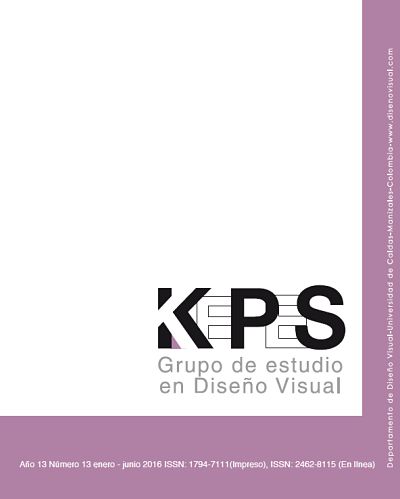Authors
Abstract
This article exposes a brief review of the contemporary artistic epistemology and its practice in techno-scientific fields as the research object in the production of works of art. The encounter among antagonistic disciplines such as science and technology giving room to bio-art, eco-art, nano-art or virtual environments and tele-presence, experimental sound and image, robotics, and satellite art among others, should be considered in this case. Another objective is to analyze the artists’ creative capacity and their peculiar vision to new scientific and ecological paradigms in order to generate new knowledge, critical thinking, and innovations, and provide solutions to significant problems of social interest out of the techno-scientific secrecy
References
____________(2005). Syncretic Reality: art, process, and potentiality. Drain, 2 (2). Páginas no numeradas. Recuperado de http://www.drainmag.com/contentNOVEMBER/FEATURE_ESSAY/Syncretic_Reality.htm
Birringer, J. (2007). Performance and Science. PAJ: A Journal of Performance and Art, 29 (2), 21-35.
Borisonik, H. y Beresñak, F. (2012). Bíos y zoé: una discusión en torno a las prácticas de dominación y a la política. Astrolabio. Revista internacional de filosofía, 13,82-90.
Echeverría, J. (2009). Interdisciplinariedad y convergencia tecnocientífica nano-bio-info-cogno. Sociologías, 22, 22-53.
FUNDACIÓN ESPAÑOLA PARA LA CIENCIA Y LA TECNOLOGÍA (2006). Libro blanco de la Investigación en Humanidades. Madrid: FECYT. Recuperado de http://belasartes.uvigo.es/escultura/_documentos/_not_documentos/CARPETA11/LIBRO_BLANCO_HUMANIDADES.pdf
Jarauta, F. (2003). El arte está dando un giro ético, Heraldo de Aragón, 16 de octubre. Recuperado de http://www.procura.org/documentacion/Ponencias_Jornada_3Octubre/Entrevista_Anton_Jarauta.htm
Kac, E. (2010). Telepresencia y Bioarte. Interconexión en red de humanos, robots y conejos. Murcia: Cendeac.
KAWATA, S. (2001). Finer Features for Functional Microdevices. Nature, 412, 697-698.
Malina, R. (2002). The Stone Age of the Digital Arts. Leonardo, 35 (5), 463-465.
Moholy-Nagy, L. (1987). Painting, Photography, Film. Cambridge: MIT Press.
Naimark, M. (2003). Truth, Beauty, Freedom, and Money TechnologyBased Art and the Dynamics of Sustainability. Leonardo Journal, A report for Leonardo Journal supported by the Rockefeller Foundation. Recuperado de ttp://rtmark.com/more/articles/naimarkarticle.pdf
Orfescu, C. (2007). Italy Joined the NanoArt Movement. Nanotechnology Now. Recuperado de http://www.nanotech-now.com/columns/?article=129
STELARC (1991). Prosthetics, Robotics and Remote Existence: Postevolutionary Strategies. Leonardo, 24 (5), 591-595.
Vásquez Rocca, A. (2009). Sloterdijk, Agamben y Nietzsche: Biopolítica, Posthumanismo y Biopoder Nómadas. Nómadas, Revista Crítica de Ciencias Sociales y Jurídicas, 23, 291-302.
Wilson, S. (2010). Art + Science Now. How scientific research and technological innovation are becoming key to 21st-century aesthetics. Nueva York: Thames y Hudson.
Webs
http://www.leonardo.info/isast/leostory.html
http://artsci.ucla.edu/BlueMorph/spanish/concept.html
http://tcaproject.org/
http://campus.usal.es/~dbbm/biotec/genfen.htm
http://stelarc.org/?catID=20227
http://stelarc.org/?catID=20242

 pdf (Español (España))
pdf (Español (España))
 FLIP
FLIP





















